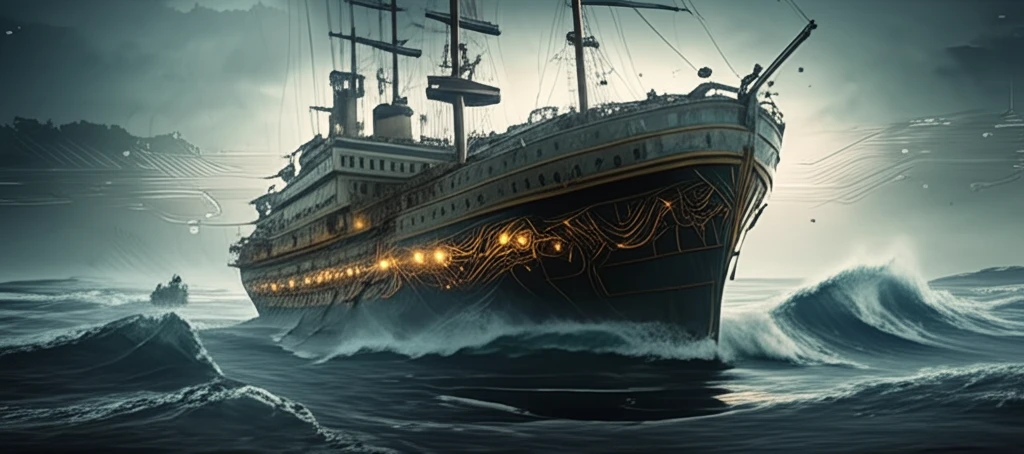
Navigate the Seas: Understanding Ship Autopilot Systems
"From Basics to Advanced Tech: A Guide to Mastering Ship Maneuvering Models and Autopilot Simulators"
Imagine steering a massive ship through unpredictable seas. Modern autopilot systems make this possible, using complex algorithms and models to ensure safe and efficient navigation. Understanding these systems is crucial for anyone involved in maritime operations, from naval engineers to recreational boaters.
At the heart of these autopilots lies a sophisticated ship maneuvering model. This model simulates the ship’s behavior in various conditions, allowing engineers to test and refine autopilot algorithms before they're implemented on real vessels. It's like a flight simulator, but for ships!
This article will explore the key components of ship autopilot systems, including ship dynamics, wave models, and the use of Motion Response Amplitude Operators (RAO). We'll break down the complex concepts into easy-to-understand terms, making this technology accessible to everyone.
Decoding Ship Dynamics: How Do Ships Respond to the Seas?

A ship's motion is usually described in six degrees of freedom: surge, sway, heave, roll, pitch, and yaw. Surge, sway, and heave refer to movements in a horizontal plane, while roll, pitch, and yaw describe the ship's orientation. These movements are influenced by various factors, including the ship's design, sea conditions, and the autopilot system.
- Generalized velocity: The speed and direction of the ship.
- Position and Euler angles: The ship's location and orientation.
- System inertia matrix: The ship's resistance to changes in motion.
- Coriolis and centripetal matrix: Forces caused by the ship's rotation.
- Damping matrix: Forces that resist the ship's motion, like friction.
- Gravitational/buoyancy forces: Forces that keep the ship afloat.
- Ballast control: Adjustments to the ship's weight distribution.
- Control forces: Forces exerted by the rudder and other control surfaces.
- Wind and wave forces: External forces caused by the environment.
The Future of Ship Autopilots: Safer, More Efficient, and Environmentally Friendly
Ship autopilot technology is constantly evolving, driven by the need for safer, more efficient, and environmentally friendly maritime operations. From advanced maneuvering models to sophisticated wave filtering techniques, these systems are transforming the way we navigate the seas. By understanding the principles behind these technologies, we can appreciate the ingenuity and innovation that make modern shipping possible.
